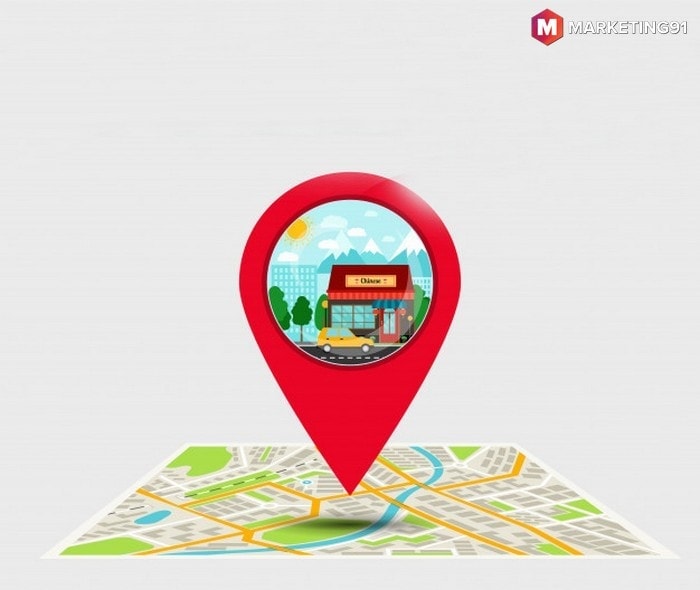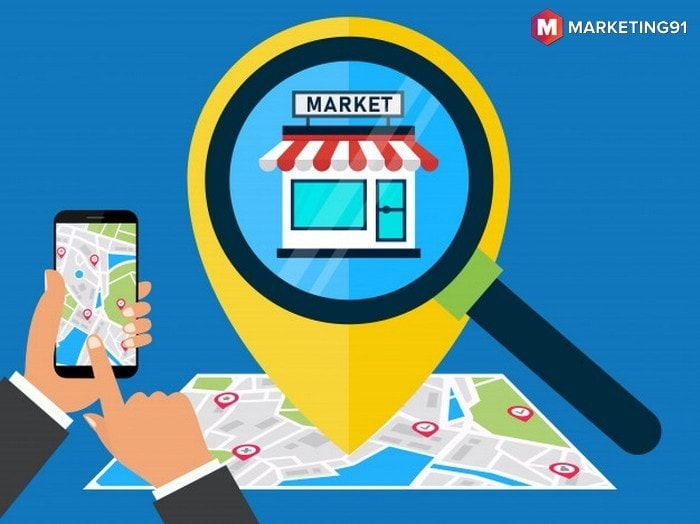Having a good location for retail is one of the crucial impacts in the case of the marketing strategy of retail because many of the associated long-term decisions and commitments depend on the location of the retail. Having a good location is one of c primary element in attracting prospects and customers.
At times a good location can also lead to an excellent competitive advantage because in retail marketing mix location is one of the crucial parameters and unique which cannot be copied by competitors in any way.
Table of Contents
Importance of a good retail store location
A good retail location as a competitive advantage which cannot be copied by the competition. One location can occupy one retail store, and time also plays a crucial role along with the location.
For example, the retail store of Gucci opens up in a particular neighborhood then, and for a couple of months, that is the store which is going to be the only purchase point of all the Gucci products for a neighborhood.
Did you know choosing the right retail location can significantly impact sales?
According to a 2022 report by the International Council of Shopping Centers, retail locations in urban areas have seen a 20% increase in foot traffic compared to those located in suburban or rural settings. This trend highlights the growing importance of situating retail stores in urban centers where high-density populations can drive more frequent and spontaneous shopping visits. The rise in foot traffic is also associated with increased revenue opportunities, emphasizing how crucial choosing the right location is for retail success.
For retailers looking to expand their reach and attract more customers, employing location-based marketing strategies can be highly beneficial. A study by Retail Dive in 2023 found that retailers employing location-based push notifications saw a 30% uplift in in-store visitations. This strategy ensures that relevant and timely messages are sent to potential customers when they are near the retail store, encouraging them to visit. Using tools like Google My Business to update store information and promotions can enhance these efforts and ensure visibility in local search results.
If Nike shows up in the same neighborhood after a couple of months, it won’t be possible for Nike to occupy the same location as of Gucci. Nike store has to be located either very close, which entirely depends on the availability of the location, or it has to be placed very far from the Gucci store thereby targeting a different neighborhood and different customers.
Customer proximity is another concern for most of the retail businesses. Several stores can be opened away from the city with a cheaper budget, but it won’t be possible for the retailers to bring customers to that particular neighborhood.
Hence the retailers have to think the way customer would think and open a store which would be convenient for the customers. Since geographically, peoples are spread out at every possible location, retailers cannot open a store in every neighborhood and instead they have to think of a Central location which would be accessible by most of the neighborhood within a particular diameter of the circle.
The retail store should be close to the place of customers. The word to use here has no quantification, and it cannot be quantified at the store should be located within 1 mile or ten miles of the customer, and it is a dependent on the locality in the country and the probability of the retailer.
Having a convenient retail store helps the organization to make supply chain and distribution arrangements easy for a particular outlet. This reduces the cost of the organization as brothers when it comes to meeting the immediate demands of the customer and fulfilling the urgent orders the retail outlet will not have any difficulty in doing so.
Because the transportation cost is reduced, it reduces the overall cost of supply chain management and operations that by everything the retail store and the retail corporation to go close to the six sigma process.
Having many retail stores nearby also enables the retail corporation to store and bed storage houses at one convenient place from which most of the retail outlets can be created within no time. This reduces the wait time and also reduces the ‘No Stock’ incidences in stores.
A well placed retail store can also help to influence the buying habits of the customers. Customers will always prefer their brand, but most of the times, customers also referred to avoid a hassle to get to their store and compromise on other brands as well.
For example, a die-hard fan of Pepsi lives in a particular neighborhood, and the availability of Pepsi is ten blocks away from his place.
Since the person is a die-hard fan of Pepsi, he will make sure to stock up his home with Axis Pepsi, but there will be times when we will have to walk those blocks or take a suitable means of transportation to the place and by Pepsi for himself.
Couple of days later results is that there is a store which is just one block away from his place but has Coca-Cola. One fine day that customer tired of walking down ten blocks research to go for Coca-Cola and why is it from the place which is one block away from this place.
He tries Coca-Cola and finds it on the same level as Pepsi and decides to stop buying Pepsi and switches to Coca-Cola.
There are few of the types of business operations that can be considered by retailers depending on the nature of the business, and the customers they serve.
Types of Retail Store location
The primary three types of retail locations that can be considered depending on the nature of the business.
1) Solitary sites
These are single small outlets of shops which are separated from different writers, and they are positioned near other retailers on the roads on the way to shopping centers. Many of the food and non-food retailers use this type of solitary sites.
The primary advantage of having a solitary site is that it is away from the competition and provides the services to the customers, which help the customer to zero down on the product offered by that particular retailer.
However, the shortcomings of having a solitary site are the pedestrian traffic will always be so as compared to a shopping center or a convenience store and the visibility will also business along with the huge amount of investment since the site will be solitary.
2) Unplanned shopping areas
These are the locations of retail stores which have evolved over a long period of time and have multiple outlets in nearby proximities. These are further divided into:
Central business district such as the downtown areas in major cities
Secondary business districts on main or high Street
District neighborhood
Location switch on the street or on the motorway which is also known as strip locations.
The advantages of having unplanned shopping areas are that there is very high pedestrian traffic during working hours and also because of my residential areas. This ensures a constant pull of customers.
The disadvantage of having unplanned shopping area is that there is a threat of shoplifting because of which high security is required. Also, it may cause inconvenience to other customers, and there are high chances of traffic blocking because of the unavailability of parking facilities.
3) Planned shopping areas
The retail locations which are well planned according to the architecture and provide multiple out that are under the same roof are called as planned shopping areas. They have huge land spaces and the collection of major retail brands. Malls, Speciality, and Lifestyle centers are classified under planned shopping areas.
High visibility to customers and harmful of customers is a major advantage of planned shopping areas. But the disadvantages are that why security is required, and the cost of occupancy is also high.
Tips to have a good retail location:
Choosing the right education is crucial in terms of business, as stated above. As such, there are different rules which govern choosing of location for retail store depending on the nature of the business and the target audience.
However, the following are a few of the steps which can be applied by almost all the retailers in order to find the right retail location.
1) Market analysis:
The company has to analyze the market in terms of their product and industry along with the nature of competition and the presence of competition. The company also has to consider how old are there in the market and how many some other businesses are there in the current location.
They have to check and analyze the market to know how far is the competition been successful in satisfying the customers. The company also has to analyze how convenient is the location in terms of supply chain management and warehousing in order to make the products available on a daily basis.
2) Demographics of the market:
The demographics of locality is essential to be considered in order to choose the retail location. The age group of the customer, profession, Lifestyle, profession, religion income groups, etc.
3) Market potential evaluation:
The paying capacity of the population plays an important role in the evaluation of the potential of the market, along with the impact of the competition and the product estimation and demand. The retailer should also have the knowledge of regulations and laws of the country in which the store is being operated.
Other things such as communal festivals which have an impact on the demand should also be considered by the business such as Christmas.
4)Identification of alternatives:
Most of the times it so happens that the retailers in hurry of starting the business finalize a location which costs them a fortune within fact a similar location with similar business potential would’ve been available somewhere very close which was neglected or overlooked.
In such cases, the retailer should not carry on finalizing the retail location and should also go out for alternatives and evaluate that location with similar parameters as stated above.
5)Allocation of marketing budget:
A retail store should have a marketing budget depending on the cost of the location, which is in the third to build the brick and mortar place. The store which is occupying a prime location and has a good inflow of customers has indeed cost a fortune for the retailer.
In such cases, the marketing budget will be very less since the story is visible to most of the customers and passers-by. On the contrary, a store which is located away from the main street should use more marketing campaigns and spend on marketing collaterals in order to attract more customers to the store.
With the advent of social media marketing, the store has become even cheaper. People can advertise about their Store on Google with a very small budget and can ensure every I reach to potential customers not only across the neighborhood but also across other neighborhoods as well.
How to measure the success of Retail Location
Once the rigorous process of selecting the location is followed, and the retail outlet is opened on a selected location it is very important to keep track of how good the location has turned out to be the business. Apart from this, the retailer should carry out a few assessments of locations:
1) Macro location evaluation
As the name suggests, this is the type of evaluation which is carried out to measure the success of retail location at National level and is conducted by the company when it wants to start the spelling of its product and open a retail business internationally.
Following are the few steps which are carried out to conduct the retail location assessment:
Detailed auditing of the market is carried out by analyzing the locations and the macro environment, which is abbreviated as PEST, which is Political, Economic, Social, and Technical and is also known as PEST analysis.
Other important factors such as the spending capacity of the custom nature of the competition and the location availability are defined at a minimum acceptable level, and the countries are right against each other.
2) Micro-location Evaluation
Many of the factors are analyzed and assessed at this level, such as:
Population – approximate number of people from the locality is taken into consideration. This number represents the people who shop at that particular retail store.
Store outlet – competing stores in the nearby vicinity are identified and the stores which reduce the attractiveness of the location and the stores which increase the attractiveness of the location.
Infrastructure – the accessibility of the story is energized with respect to potential customers.
Cost – the most important factor in the case of a retail store is the cost of development and operation. The performance of the retail business depends on the cost required to set up the retail store.
Liked this post? Check out the complete series on Retailing




Thank you for you simple and straight forward writing style that can be understood by any reader.